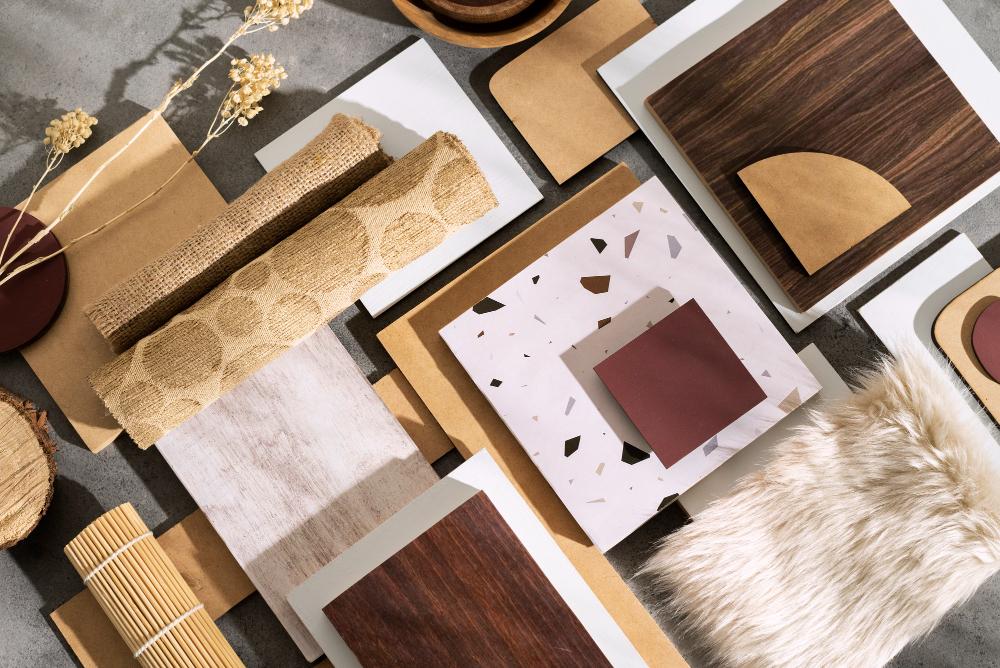When building a new home or choosing flooring for your home’s renovation, there are more factors to consider than aesthetics. Think about what is more suitable for each area of the house, your budget, maintenance, and durability. Make the best choices by doing your research, visiting a few flooring stores, and asking questions.

Use this short guide to get you on your way to choosing the best flooring for your home.
Hardwood
Hardwood has been a popular flooring for a long time, best loved for its beauty. It’s suitable for the entire home except for bathrooms and other high-moisture areas. It’s high-durable and lasts for a lifetime. However, it’s easily scratched and perhaps not the best choice for families with kids and pets.
Hardwood floors can be sanded and stained for versatility and longevity of beauty. Hardwoods range from expensive to budget-friendly. The most common wood used for floors is oak. It’s also available in other wood types including maple and cherry.
Vinyl
One of the more affordable options, vinyl is available in sheets, tiles, and luxury vinyl planks (LVP). It’s low maintenance and easy to clean. Simply sweep and mop with water or a steam mop. It’s suitable for the whole house including basements and bathrooms. LVP is the most durable type of vinyl for floors. It’s waterproof and wear and tear-resistant. It’s also produced in various styles with patterns that look like hardwoods or stone.
Tile
Tile floors are popular for their easy maintenance and durability. Since they’re water-resistant, you’ll often see them in kitchens, laundry rooms, bathrooms, and commercial spaces. They’re easily scaled to fit various spaces and come in a huge variety of colors and patterns to help you personalize and style your interior design.
Consider porcelain or natural stone tiles for high-traffic areas.
Laminate
Introduced in the 1980s, laminates have become sturdier and more durable. The ability to achieve the beauty of hardwood at a much lower cost makes laminate flooring very popular.
Laminates are produced by printing a photographic image on a surface that is applied to a sturdy and durable base. This method lets manufacturers and flooring stores offer a variety of wood looks, textures, and colors.
When choosing laminate, keep in mind that it’s sensitive to moisture and can’t be refinished.
Linoleum
Linoleum is a good choice for the environmentally conscious. It’s produced from all-natural materials such as rosins, wood flour, and linseed oil. Forests are left untouched. Since bactericidal properties discourage microorganisms, it’s a good choice for homes with young children and family members with compromised immune systems.
Available in sheets or tiles, linoleum is durable and budget-friendly. It’s water and scratch-resistant making it suitable for anywhere in the home including the kitchen and
bathrooms. Consider using sheets in high-moisture areas; water can cause tiles to warp and separate.
Carpet
Homeowners have loved carpeting for years for its plush comfort and warmth. It absorbs noise and helps with energy efficiency since it eliminates cold spots coming from beneath the floor. A broad range of colors and textures makes carpeting fun to use in home decorating.
Floor-covering options available today are easier to maintain and have replaced carpeting in kitchens, bathrooms, and dining rooms. However, it remains a popular choice for bedrooms and play areas.
Bamboo
Bamboo is a highly renewable material that is a type of grass. Bamboo floors in your home will mimic wood floors at a more budget-friendly price. It’s also easier to maintain and is more durable than wood. It’s highly aesthetic and a popular choice for living and dining rooms.
Bamboo stands up well in high-traffic areas and is a good choice for homes with kids and pets. It’s easy to install and comes in a host of tones and colors to match your interior decor.
Hybrid
As the term suggests, hybrid floors are a combination of vinyl and laminate. Hybrid floors have the best features of both vinyl and laminate without the disadvantages of either one.
The blend of these two popular choices creates a more durable option for floors. Susceptible to swelling, laminate floors are not waterproof. Vinyl withstands moisture but is harder to install since planks must be glued to the floor. A click-and-lock method makes hybrid floors
DIY-friendly. It’s also easy to remove damaged planks and replace them.
Composite or Engineered Wood
Composite or engineered wood floors are perfect for those who long for the beauty of hardwood but shy away from the cost of installing it. It’s cheaper per square foot and easy to install.
Engineered wood is produced by adding a hardwood film on top of compressed plywood. Since the top layer is hardwood, the maintenance is the same as for hardwood floors. Be aware that sharp objects like high heels may damage the compressed plywood underneath.
You’ll want to avoid installing engineered wood in bathrooms and other high-moisture areas. But if you love the look of wood, it’s a great option for living rooms and dining rooms.





